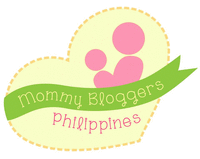My youngest is 4 years old but as early as 2 months old, Luzy has exhibited bronchial problems. When she was about a year old, we transferred to Antipolo and the pollen in our backyard was really harsh for her. We’ve had bouts of asthma attacks that led to her being nebulized every 3hrs, hence, we’re all awake at wee hours. There was this time when she was really having a hard time breathing and one look at her, the pedia asked her to be confined because of the way she was taking air and the obvious difficulty. It pains us to see such a little girl with severe bronchial asthma.
And on top of her bronchial asthma, Luzy has skin asthma. These two play tag team on her.
She has white patches on her arms, face and at the back of her knees which were all caused by her skin condition. If it flares up, she’s itchy all over and couldn’t sleep.
The attacks became predictable as the years went by because we’ve found her triggers which are:
- nuts
- chocolates
- chicken
- pollen
- static clay
- sudden change of weather
- extreme heat
- and yellow food coloring, yellow food preservative
It wasn’t easy finding and confirming these triggers, it took us a lot of sleepless nights just figuring out how we can make her lungs better so she can stop drinking anti asthma medications, specially those with steroids (even with her skin asthma, her medications involved steroidal creams & lotions).
Our first step was to limit her nuts + chocolate combos (she loooooves chocolate covered almonds), took out all the static clay toys she has and stuck with the normal dough type clay. If the weather is humid and hot, she’s always inside her room, AC in full blast (Hello, Meralco bill). And then the best part, I totally eliminated yellow food dye in all of her food and drinks.
Yes, I stopped feeding my child yellow colored food such as cheese flavored snacks, mango juice, cheese powder, instant noodles, yellow jellos, yellow marshmallow, yellow chocolates, and basically anything that’s colored yellow.
For me this is the biggest reason why Luzy is now better and having lesser attacks than before.
I now understand the importance of reading the labels and the list of ingredients in every product I buy. I started researching about certain preservatives even if it’s FDA approved. I take longer than usual when buying snacks for my girls because I read and I Google anything I am not familiar with.
I’ve asked Luzy’s doctor about yellow food color/dye but she’s not too hell bent in taking it out, at least not as much as nuts and the other triggers. I guess it’s still unpopular amongst doctors?
Specifically, I watch out for Tartrazine and the other yellow names in the ingredients. Tartrazine a synthetic lemon yellow azo dye primarily used as a food coloring. It is also known as E number E102, C.I. 19140, FD&C Yellow 5, Acid Yellow 23, Food Yellow 4, and trisodium 1-(4-sulfonatophenyl)-4-(4-sulfonatophenylazo)-5-pyrazolone-3-carboxylate). See, the yellow food dye comes in so many names and forms, so I have to be in the know for all of these things.
Here’s a good article about food dye being tied to allergies.
This one’s a study about food dyes, specifically yellow #5 causing allergies to children and adults.
I know for a fact though that NOT ALL CHILDREN AND ADULTS have food dye allergies or are remotely sensitive to it. I even read somewhere that food dye allergy is a rare condition. It was just instinct and a good eye for detail that I was able to pin point the yellow dye allergy.
It certainly paid off when we removed yellow food dye from her diet. I guess it won’t hurt if you try it as well especially if your kids’ asthma seems to worsen even after medications.
Of course, always keep your doctor in the loop. Any changes you make on her prescription, let her/him know. They are in the first place, more knowledgeable than us.





Honestly, this is the first time that I’ve heard about food dye allergies. Basta talaga sa mga anak natin, mommies will really do anything kahit non-stop researching pa yan! Am glad that it really help your daughter. 🙂
Ang hirap ng may allergy. Good thing your kid has a mom like you, at least maprevent na yung cause of allergy.
Buti na lang you were able to identify the triggers! Ang hirap pag may sakit ang kids, lalo na asthma. I’ve had my fair share of asthma attacks, and mine and my son’s is usually weather-related. Ang hirap pag food ang trigger lalo na pag sa bata. 🙁
I’m familiar with allergies to nuts and chocolates but It’s my first time to hear about food dye allergies. It’s really good that you found out about this and is sharing it to create awareness.
Oh first time kong narinig ‘to! Good thing mommy na you stand on your feet and tale action kc kawawa naman si bagets kung maallergy sya sa mga kinakain nya. Dapat talaga mapili at mapanuri din talaga tayo sa mga kinakain ng mga anak natin.